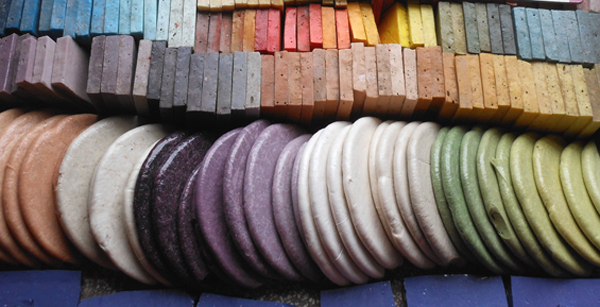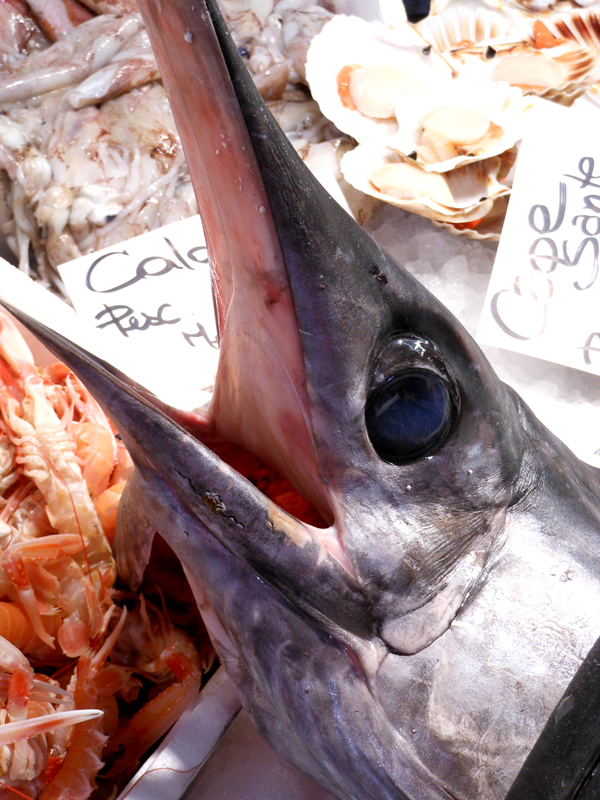 |
| Here are some of the Orsoni mosaic tile color samples. The Orsoni company has 3,000 different colors and also a variety of gold tiles. |
 |
| The Orsoni company calls this their "library" of enamels. There are shelves and shelves of glass that can be purchased in sheets, or pre-cut into tiles. |
 |
| This Orsoni mosaic tile cutter is meticulously trimming tiny golden tiles. The gold tiles are made of sheets of gold leaf sandwiched between layers of glass. |
 |
| A Henry Moore sculpture in the Guggenheim garden. |
 |
| A Guggenheim garden detail. |
 |
| John Lennon's wife, Yoko Ono, gave Peggy Guggenheim this Wishing Tree. Visitors write their wishes and hang them on the tree. |
 |
| GARDENING: Surely the color scheme of this person's front door and the vine peeking over the secret garden wall were intentional. |
 |
| Simple, inviting and enticing. |
 |
| A secret forest, walled off from the bustle of the busy canal. |
 |
| A private palazzo garden with gnomes of royalty. |
 |
| A canal-side garden. |
 |
| A cascade of foliage. |
 | |
| WOODEN BOAT BUILDING: A squero is a boatyard, and here is one where gondolas and other wooden boats are built and repaired. |
 |
| The work of a local wooden boat builder and creative painter. |
 |
| LEAF FOLDING: This lovely woman makes sculptures out of leaves. They are highly detailed and elegant. I have a grasshopper. |
 |
| Another block of Burano. |
 |
| Who needs house numbers? |
 |
| I'm home. |
 |
| BRONZE CASTING AND IRON WORK: The lion is the symbol of San Marco, and therefore, of Venice. They adorn buildings, gates, doorbells and churches all over Venice. This one looks serious, yet gentle. |
 |
| This cast iron lion is one of many fountains situated in the squares. The water is potable, fun to paddle in (if you're a child) and great to cool your hands during the scorching summer months. |
 |
| MASONRY: The architecture of Venice is a miracle of masonry. Here is a combination of brick, stone and stucco. |
 | ||||||||||||||||||
| And finally, a fantastic feat of physics. |



























